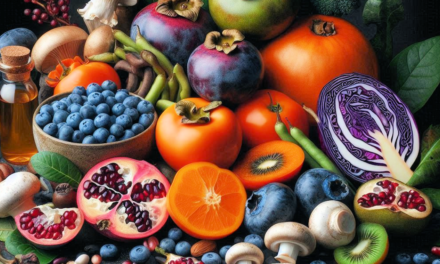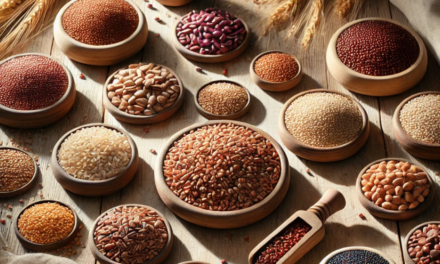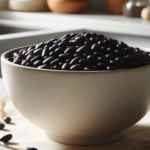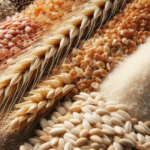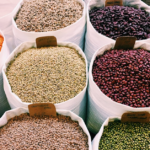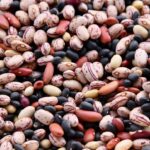Including intact whole grains in a diet for individuals with diabetes can improve blood sugar control, provide essential nutrients, and reduce the risk of chronic diseases.
Intact whole grains are grains that haven’t been heavily processed, which means they still contain the bran, germ, and endosperm. By preserving the integrity of whole grains, they become a valuable source of fiber, vitamins, and minerals necessary for diabetes management.
The American Diabetes Association highlights the importance of incorporating whole grains as a staple in meal plans for better blood sugar control and overall health. Studies have shown that intact whole grains in a diet can improve insulin sensitivity and reduce the risk of developing type 2 diabetes. This makes them an invaluable component of nutrition for people with diabetes.
For instance, a study emphasized the role of whole grains, such as oats and barley, in enhancing insulin sensitivity due to their high fiber content and complex carbohydrates. This benefit is crucial for individuals managing diabetes, as improved insulin sensitivity can help maintain blood sugar levels within a healthy range.
How the Glycemic Index Ranks Whole Grains
The glycemic index (GI) measures how quickly food can increase blood sugar levels, with lower GI foods being preferable for managing diabetes. Intact whole grains typically have a lower GI compared to refined grains, making them a better choice for people with diabetes. Whole wheat and oats, for example, release glucose into the bloodstream more slowly, preventing rapid spikes in blood sugar levels and aiding in diabetes management. Quinoa and barley, known for their low glycemic load, are ideal choices for those seeking stable blood sugar levels.
Research comparing the GI of different grains showed that intact whole grains, like steel-cut oats, had a lower GI than processed grains. This highlights the impact of grain processing on blood sugar control.
Nutritional Benefits of Intact Whole Grains
The antioxidants found in intact whole grains can help reduce inflammation in the body, which is a common issue for individuals with diabetes. The fiber content in whole grains promotes satiety, which can assist in weight management, an important aspect of diabetes care.
Magnesium, another nutrient abundant in whole grains, plays a critical role in glucose metabolism and insulin action, making these grains particularly beneficial for people with diabetes.
Quinoa, a whole grain rich in magnesium and fiber, serves as an excellent example of these nutritional advantages. Regular consumption of quinoa has been associated with better blood sugar control and an overall improvement in the management of diabetes.
Another example that might pique your curiosity is rolled oats, which are also referred to as old-fashioned oats. They are made from whole oat groats that have been steamed and then rolled into flakes. This process preserves the three main parts of the grain kernel – bran, germ, and endosperm – while stabilizing healthy oils and reducing oat cooking time.
Since rolled oats contain the entire oat kernel with nothing removed, they are classified as an intact, 100% whole grain product. The steaming and rolling process is considered minimal processing that does not strip away the nutritious bran and germ layers like more heavily processed refined grains.
For quick reference, here is an alphabetical list of intact whole grains; amaranth, barley, brown rice, buckwheat, bulgur, millet, quinoa, rye, sorghum, spelt, teff, wheat, and wild rice.
Whole Grains vs. Refined Grains
Refined grains have been processed to remove the bran and germ, stripping them of their fiber, vitamins, and minerals. This processing leads to a higher glycemic index and can have a negative impact on blood sugar levels for people with diabetes.
Replacing refined grains with intact whole grains can lead to improved blood sugar control and reduced insulin resistance. The complex carbohydrate structure of intact whole grains provides sustained energy, which is crucial for managing diabetes compared to quick-digesting refined grains.
For example, substituting white rice with brown rice or whole wheat pasta can significantly lower the GI of a meal, contributing to more stable blood sugar levels.
Here are some examples of grains that have been processed and are not considered intact whole grains:
- White flour – The bran and germ have been removed from the wheat kernel, leaving only the endosperm. This makes it a refined grain.
- White rice – The bran and germ have been removed from the rice grain, leaving only the endosperm.
- Enriched grains like enriched wheat flour or enriched white rice. These have had some nutrients added back in after processing, but are still missing many of the nutrients found in the original whole grain.
- Many breakfast cereals made from refined grains like corn flakes, rice krispies, etc.
- Breads, pastas, crackers, etc. made from refined wheat flour rather than whole wheat flour.
- Grain products labeled as “made with whole grains” but not 100% whole grain. These contain a mix of whole and refined grains.
Eating and Serving Suggestions
The Dietary Guidelines for Americans recommend that at least half of the grains consumed should be whole grains, emphasizing intact whole grains for individuals with diabetes. Spreading whole grain intake throughout the day can help maintain steady blood sugar levels. People with diabetes should aim for a variety of intact whole grains in their diet, such as quinoa, bulgur, and whole wheat pasta, to ensure a diverse nutrient intake.
One way to include whole grains in a diabetes-friendly diet is by starting the day with oatmeal or whole grain toast. For lunch, consider adding barley to soups or salads, and for dinner, try using quinoa or bulgur as a base for dishes.
Incorporating Whole Grains Into a Diabetes Friendly Diet
Whole grain recipes for people with diabetes can be both delicious and nutritious. For example, quinoa salads, barley soups, and whole grain wraps can add variety and nutritional value to the diet. Replacing refined grains with intact whole grains in meals like sandwiches, stir-fries, and breakfast cereals can significantly improve the nutritional quality of a diet for diabetes.
Cooking methods such as steaming, boiling, or baking can help retain the nutrients and fiber content of whole grains, enhancing their health benefits for people with diabetes.
Potential Considerations and Risks
People with diabetes may experience bloating or gas when they first start eating whole grains, but these symptoms typically fade as their body adjusts to the higher fiber intake. Increasing water intake can aid in digestion and prevent constipation. As always, consulting a healthcare provider when making significant dietary changes to ensure your particular nutrient needs and health goals are met is always a good idea.
Conclusion: Advantages of Intact Whole Grains in Diets for Diabetes
Intact whole grains offer numerous health benefits for individuals with diabetes, including improved blood sugar control, enhanced nutrient intake, and a reduced risk of chronic diseases. By making intact whole grains a staple in their diet, people with diabetes can experience better overall health outcomes and enhanced management of their condition. Educating individuals with diabetes about the importance of including intact whole grains in their meal plans can empower them to take control of their health and well-being.
Takeaways
- Intact whole grains are an excellent source of fiber, vitamins, and minerals, making them beneficial for managing diabetes.
- Whole grains have a lower glycemic index than refined grains, helping to prevent rapid spikes in blood sugar levels.
- Incorporating whole grains into the diet can improve insulin sensitivity and reduce the risk of developing type 2 diabetes.
- Whole grains provide antioxidants that can help reduce inflammation, and their fiber content promotes satiety and weight management.
- Aim for a variety of intact whole grains, such as quinoa, bulgur, and whole wheat pasta, to ensure a diverse nutrient intake.
- Consider begining your day with whole grain options such as oatmeal or whole grain toast. Incorporate barley into your lunchtime soups or salads, and use quinoa or bulgur as a base for your dinner dishes.
Go here to see a list of whole grains to consider adding to you menus.
###
Remember, proactive self-care matters. Every step we take, every decision we make to better manage our diabetes makes a difference in how well and how long we live. Choose wisely. Live long, love life and be well.
The information on this site is not intended or implied to be a substitute for professional medical advice, diagnosis or treatment. The information on this site is for informational purposes only and is not intended to diagnose, treat, or cure any type of disease or condition. Diabetes Control Today does not guarantee any results for your specific situation. In support of our website, we may share resources offered by trusted partners. If you purchase products from any of these partners, the owners of this site may receive a portion of the proceeds. These affiliations allow us to continue bringing you valuable, potentially life-changing content.


